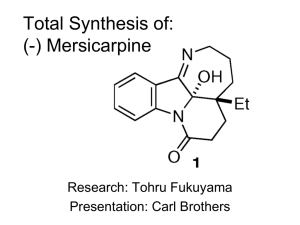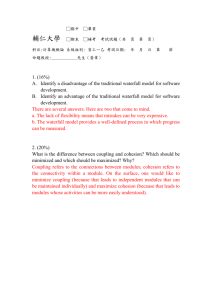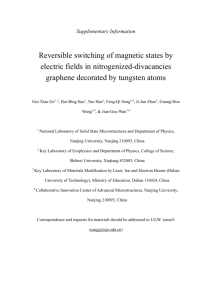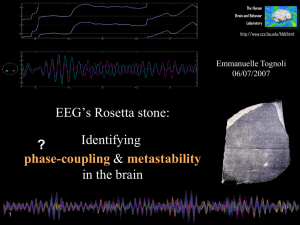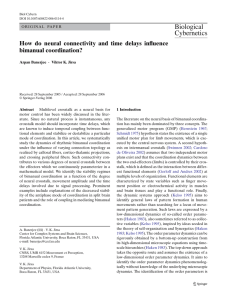Biomolecular NMR spectroscopy
advertisement
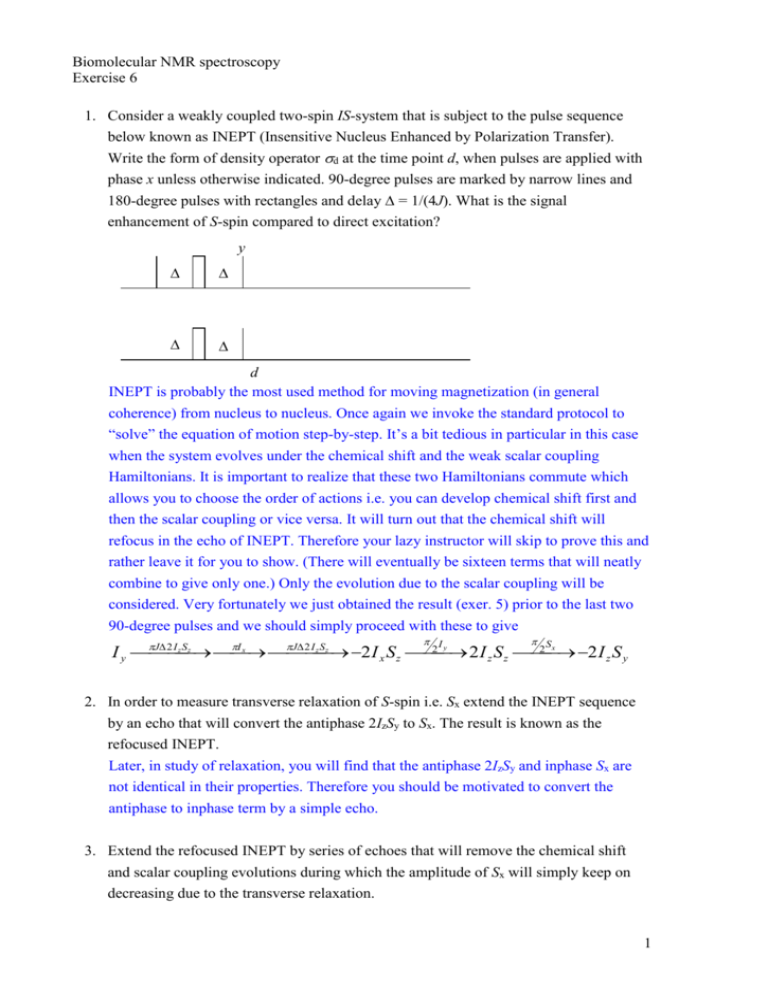
Biomolecular NMR spectroscopy Exercise 6 1. Consider a weakly coupled two-spin IS-system that is subject to the pulse sequence below known as INEPT (Insensitive Nucleus Enhanced by Polarization Transfer). Write the form of density operator d at the time point d, when pulses are applied with phase x unless otherwise indicated. 90-degree pulses are marked by narrow lines and 180-degree pulses with rectangles and delay = 1/(4J). What is the signal enhancement of S-spin compared to direct excitation? y d INEPT is probably the most used method for moving magnetization (in general coherence) from nucleus to nucleus. Once again we invoke the standard protocol to “solve” the equation of motion step-by-step. It’s a bit tedious in particular in this case when the system evolves under the chemical shift and the weak scalar coupling Hamiltonians. It is important to realize that these two Hamiltonians commute which allows you to choose the order of actions i.e. you can develop chemical shift first and then the scalar coupling or vice versa. It will turn out that the chemical shift will refocus in the echo of INEPT. Therefore your lazy instructor will skip to prove this and rather leave it for you to show. (There will eventually be sixteen terms that will neatly combine to give only one.) Only the evolution due to the scalar coupling will be considered. Very fortunately we just obtained the result (exer. 5) prior to the last two 90-degree pulses and we should simply proceed with these to give I S J 2 I z S z I x J 2 I z S z 2 y 2 x I y 2 I x S z 2 I z S z 2 I z S y 2. In order to measure transverse relaxation of S-spin i.e. Sx extend the INEPT sequence by an echo that will convert the antiphase 2IzSy to Sx. The result is known as the refocused INEPT. Later, in study of relaxation, you will find that the antiphase 2IzSy and inphase Sx are not identical in their properties. Therefore you should be motivated to convert the antiphase to inphase term by a simple echo. 3. Extend the refocused INEPT by series of echoes that will remove the chemical shift and scalar coupling evolutions during which the amplitude of Sx will simply keep on decreasing due to the transverse relaxation. 1 Very well, you probably got from the refocused-INEPT. I Sx J 2 I z S z J 2 I z S z y 2 I z S y S x Now you simply like to keep the inphase term and simply follow its amplitude falling in steps. Your echo must now remove both chemical shift evolution and scalar coupling evolution, i.e. you will simply spend time and monitor the decay exp(-R2). 4. Design a spin-state selective filter element, i.e. two equally long alternatives a and b, to be added on the sequence below y so that either 2IzSy (a) or Sy (b) will be generated. In this way the transverse relaxation rate has acted (approximately) equally long on both 2IzSy and Sy. Analyze the subsequent evolution of 2IzSy and Sy under the chemical shift and scalar coupling during t1 e.g. by making a Fourier transformation of the resulting terms. Add and subtract the signals of the two experiments. It is easy to see that on can create -2IzSx as in 1 by an 90-degree y-pulse. We allow this to develop into Sy just as in the refocused INEPT. It is easy to see that on can create -2 IzSy as in 1 by an 90-degree x-pulse. The trouble is to keep this i.e. we wish to remove chemical shift evolution and scalar coupling evolution. We can put two 180 pulses on S in the symmetrically in the total delay of 2 first /2 and second 3/2. 2



